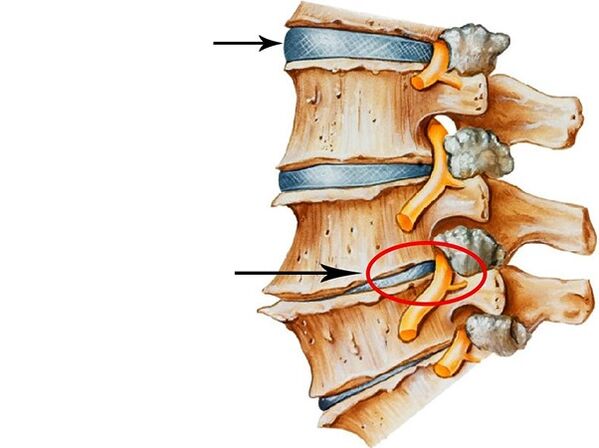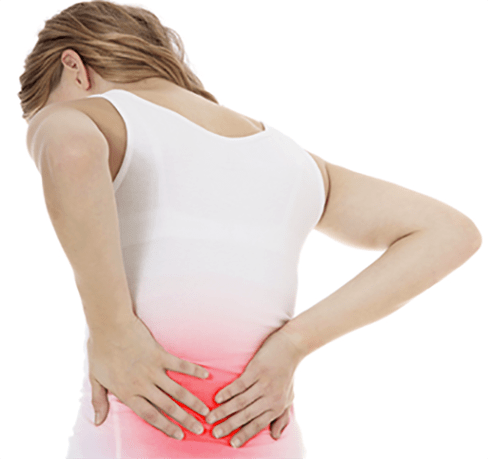Osteochondrosis is one of the most common pathology of the spine.In this disease, it affects the tissue of spinal and interveregni discs.Most often, osteochondrosis affects the lumbar region, because it is a maximum load on it when walking, sitting, running and other activities.
If treatment does not start on time, the disease can lead to radiculitis, intervertebral hernia, lumbago, Ishi, disability.
Development phases
The disease is usually divided into several phases:
- 1. Phase- There are minor changes in the interfaced discs, the spinal column is not deformed, a person feels slightly hurts in the lower back.
- 2. Phase- The pain in the affected area becomes stronger, breaches in interfoodbral discs become more detailed.
- 3. Phase- There are intervertebral hernia, the spinal column is deformed.The patient feels strong pain in the affected area.
- Fourth phase- The person is hard to walk and make any movements.The pain occurs with a mild movement.At this stage, the latter, the patient gives a disability, as a rule.

Causes
The most common people whose profession or type of activity is associated with physical efforts and large loads on the lumbar department: builders, engine, communal workers and athletes are subject to osteochondrose.Also, the pathology may appear in teachers, cash registers, office workers, because they spend most of the time in a seated position.
There are many factors that affect the phenomenon of osteochondrose:
- Lack of physical effort, spending a seated lifestyle.
- Strong load in the lumbar area.
- Joint diseases and spine.
- Lumbar spine injuries.
- Flat feet or clubfoot.
- Obesity.
- Poster disorders, chair.
- Scoliosis or kyphosis.
- Long-term hypothermia.
- Age - deleted changes in the spine.
- Genetic predisposition.
- Some internal diseases of cardiovascular, nervous, endocrine systems.
- Incorrect nutrition.
Symptoms
The main signs of osteochondrosis of the lower back are:
- Strong pain in the lower back pain, sometimes give up their legs and intensify when it performs any movement, sneezing, coughing, etc.
- A permanent tension of the back muscle.
- Inability to correct the back after a long stay in the same position.
- An unpleasant sensation when leaning or backing back.
- Lights in the lower back.
- Loss of sensitivity in buttocks, hips.
- GOOSEBUMPS, TRNER SENSATION IN FOGS.
- Stiffness of the legs and feet.
- The constant cold of the feet and the feeling of cold in the legs.
- Varicose veins.
- Breach of potential in men.
- Incorrect menstruation in women.

The main symptom of pathology is pain, when it appears on which you must consult a doctor urgently.
Diagnostics
Osteochondrose diagnosis begins with a detailed patient examination and a collection of anamnesis - the doctor asks the patient on osteochondrose cases in gender, chronic diseases, diseases and spine.
Furthermore, the specialist prescribes instrumental diagnostic methods, including:
- X -ray lumbar regions- Allows you to detect the presence of pathology and degree damage to vertebral.
- Computer Tomography (CT)- A more precise method of research that allows you to determine damage to intervertebral discs, degree change, deformation of spine deformations.
- MRI- Allows you to fully study intervertebral discs, provides information on smaller spine disorders, are used in difficult cases, or if the image test using CT or X -Ray test is unclear.
- Myelography- a type of diagnosis in which the contrasting tool is used to detect interverters.
Based on the data, the specialist determines the degree of pathology and prescribes the required treatment.
Treatment
The treatment of osteochondrosis is done comprehensively.The necessary medications and procedures are prescribed only by the doctor, strictly individually.
First of all, the patient is prescribed by numerous drugs based on NSAID - not -steroidal anti-inflammatory medications that can alleviate inflammation and eliminate pain in the affected area.Hondroprotectors - medications that stop the process of destroying cartilage and feeding the cartilage of tissues are also prescribed.Vitamins that improve the state of the entire body are prescribed as additional medications.
For many spinal diseases, including osteochondrose, physiotherapy is prescribed.The procedures are able to improve blood circulation to lesions, relieve muscle tension, eliminate pain and inflammation.They are prescribed by osteochondrose, electrophoresis, acupuncture, magnetic therapy and other procedures.
The patient is also prescribed massage, baths with mud or hydrotherapy with which it is possible to alleviate tension and muscle tiredness, relax and improve blood flow.Baths with mud mud can eliminate the inflammatory process.
In the first phases of the disease, exercise therapy is prescribed - colored, performance gymnastics help restore the mobility of the spine, to strengthen the back muscles.On 3 and 4 stages of osteochondrose, this type of treatment is not used.
The diet is very important in the treatment of the disease - it is necessary to involve in dietary products rich in minerals - fruits, vegetables, mash.Be sure to eat low -phate meat, because it is rich in proteins - will be the most useful to eat chicken or turkey meat.Will be useful to use fermented dairy products.It is recommended to reduce the amount of greasy, sharp, smoked, fried dishes.It is important to observe drinking mode - be sure to drink at least 1 liter of clean water a day.
With the osteochondrose of the lumbar region, the treatment in the Sanatorium will be useful, where the experts will treat the disease throughout the patient, and the patient is constantly under the supervision of the doctor.
If conservative treatment methods do not help, then the surgical treatment method is used.During the operation, the wheels affected or cartilage replace the implant.And if there is an intervertebral hernia, then it is removed.
Prevention
- Limit the load on the lower back.
- Play sports, work in the morning exercises.
- Eat right.
- Try to prevent lumbar spine injuries.
- Avoid lower back hypothermia.
- With a long seat, change the body position more often, get up regularly and do simple exercises for warm or just walk.
- Save proper posture, don't bend yourself.
- In case of legs or flat legs or straight legs, carry special orthopedic inscriptions that reduce the load on the spine.

















































